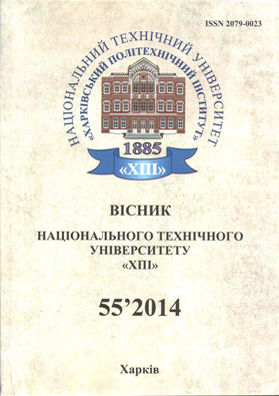К вопросу о применении методики скоринга к задаче формирования портфеля ценных бумаг
DOI:
https://doi.org/10.20998/%25xAbstract
Предложена методика портфельной оптимизации, которая является альтернативной по отношению к классической. Методика основана на модели скоринга ценных бумаг, представленной в виде формулы свёртки нормированных оценок доходности, риска и ликвидности ценных бумаг. Результатом расчёта по этой модели для каждого вида ценных бумаг является коэффициент инвестиционной привлекательности, пропорционально значению которого определяются доли ценных бумаг в портфеле.References
Рубцов Б. Б. Мировые фондовые рынки: проблемы и тенденции развития : дисс. д-ра экон. наук : 08.00.10, 08.00.14 / Б. Б. Рубцов. – М., 2000. – 152 с.
Боровкова В. А. Рынок ценных бумаг. – СПб. : Питер, 2005. – 320 с.
Железко Б. Скоринг ценных бумаг как способ оптимизации инвестиционных решений / Б. Железко, О. Синявская // Финанс. директор. – 2005. – № 5. – С. 43 – 49.
Carlsson С. A posibilistic approach to selecting portfolios with highest utility score / C. Carlsson, R. Fuller, P. Majlender // Fuzzy Sets and Systems. – 2002. – № 131. – P. 13–21.
Downloads
How to Cite
Гужва, В. А., & Соколова, А. Г. (2017). К вопросу о применении методики скоринга к задаче формирования портфеля ценных бумаг. Bulletin of National Technical University "KhPI". Series: System Analysis, Control and Information Technologies, (55), 25–31. https://doi.org/10.20998/%x
Issue
Section
SYSTEM ANALYSIS AND DECISION-MAKING THEORY
License
Copyright (c) 2017 Вісник Національного технічного університету «ХПІ». Серія: Системний аналiз, управління та iнформацiйнi технологiїAuthors who publish with this journal agree to the following terms:
- Authors retain copyright and grant the journal right of first publication with the work simultaneously licensed under a Creative Commons Attribution License that allows others to share the work with an acknowledgement of the work's authorship and initial publication in this journal.
- Authors are able to enter into separate, additional contractual arrangements for the non-exclusive distribution of the journal's published version of the work (e.g., post it to an institutional repository or publish it in a book), with an acknowledgement of its initial publication in this journal.
- Authors are permitted and encouraged to post their work online (e.g., in institutional repositories or on their website) prior to and during the submission process, as it can lead to productive exchanges, as well as earlier and greater citation of published work (See The Effect of Open Access).


